Resources
Useful articles
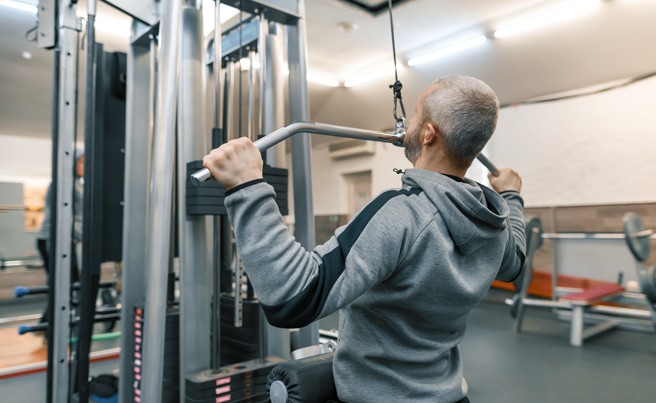
You might have read some guides on muscle building and encountered something scary. Studies show that, after age 30, you start to lose muscle mass at a rate of 3-5% per decade. Are you doomed to lose muscle from now until the day you die, or is there something you can do about it?
Thankfully, this isn’t an unchanging fate. You’re perfectly able to build muscle mass no matter how old you are, you just have some different considerations from the average young guy looking to get into fitness.
1. Start Slow
It doesn’t necessarily matter if you’ve been sedentary for 30 years or if you were a former bodybuilder and just let your fitness slide after you retired. After years or decades of living a less healthy lifestyle, you’re going to be out of shape. You might not be morbidly obese, but you’re not at the peak of your fitness.
One of the biggest mistakes that men tend to make when they’re trying to build muscle is trying to aim for too much, too fast. You might remember being able to lift a lot more than you can now, and you might not have grasped quite how much of that strength you may have lost over the years. That, combined with the natural male tendency to arrogantly push beyond their limits, puts you at a much greater risk of injuring yourself.
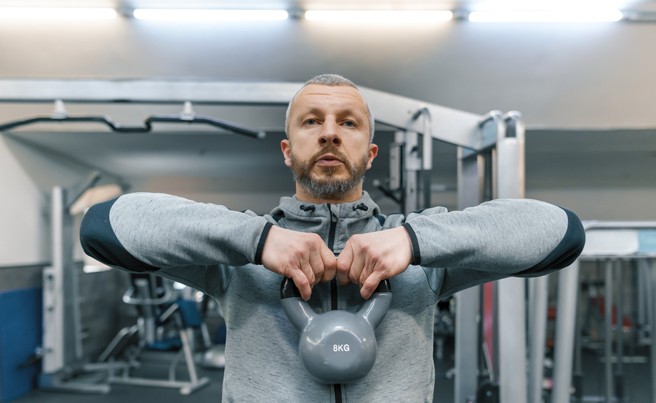
Doing so has three consequences, all of which are dangerous to your goals of building muscle.
- Attempting to work out without a proper diet plan can lead to burning muscle more than building it.
- Pushing yourself to see results before you’re ready can lead to mental burnout, destroying your motivation and putting you back in the sedentary habits you’re trying to escape.
- Pushing too hard can tear muscles and injure joints, and at 50+, injuries take a long time to heal. This can set your plans back by months or years.
It’s much, much better to start slow and feel like you’re not making as much progress as you want to make than to push too hard and set yourself back.
Make sure to keep yourself safe! If you’re doing work with machines, know how to use the machines. If you’re doing barbell work, make sure you have a spotter on hand. Check in with a trainer or a friend regularly to make sure you’re keeping your form in check.
2. Learn Autoregulation
Autoregulation simply means self-regulation. Once you’ve reached age 50, your daily performance in exercise will vary depending on a lot of different external factors, including the quality of your sleep, your daily stress, your nutrition, and so on.
What this means is that doing one exercise one day might push you to your limits, and another day you find it almost trivially easy. It’s difficult to set a defined exercise routine and guarantee that it’s going to give you the results you want each time.

Instead, you’re going to have to be a little more free-form with it. The goal of autoregulation is to pick an exercise and then perform that exercise to the point of failure. You might know that today you’re going to do sets of deadlifts with 3 reps each set, at a defined weight. What you don’t do is choose how many sets you’re doing. Do sets until your form breaks down or your strength fails you and you can no longer continue. Some days that might be three sets, some days it might be five, and it’s fine either way. The goal is to reach that point of failure, regardless of how long it takes.
3. Focus on Compound Exercises
Exercises come in two forms: isolated and compound. An isolated exercise is something like a seated dumbbell curl or a triceps rope extension. They usually use machines to isolate one muscle or muscle group, and focus exclusively on that muscle. Compound exercises are more like military presses or deadlifts, which reach and target multiple muscle groups throughout the body.
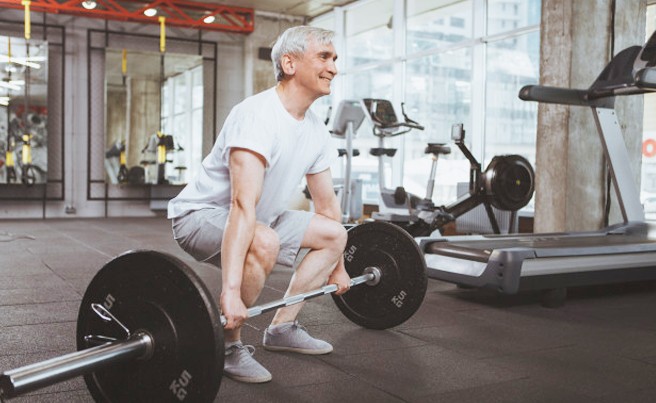
Isolated training is fine when you’re younger and can work on various isolated muscle groups in rotation. They’re also good for if you’re injured and still want to work out in a way that avoids aggravating an injury.
As you age, you want to keep the complex machinery that is your body working well in conjunction. With isolated exercises, it’s all too easy to accidentally overlook certain muscle groups and end up with weaknesses that make other exercises more difficult. It’s just making things harder on yourself.
4. Modify Common Exercises for Safety
Some of the most common exercises, like rows, deadlifts, presses, chin-ups, and squats are great for building muscle, but they become riskier to do when you’re older. As you age, the connective tissues in your joints break down, which is why joints hurt and can get injured more easily. Likewise, it’s easier to injure your back, particularly your lower back, even if you’re doing an exercise exactly the way it’s “supposed” to be done.
The key is modification. You can modify certain exercises to be safer for aging joints and bones, without sacrificing the gains you’re getting out of them.
The Fit Father YouTube channel has videos like this one which tells you how to modify certain exercises for safety, to avoid injury, and to keep your exercise plans on track.
5. Develop Your Workout Plan
There are thousands of personal trainers out there who work exclusively with men over 50, and there are almost as many exercise plans as there are trainers. Most of them work. It’s pretty difficult to find an exercise plan that doesn’t work if you put your mind to it. So, instead of prescribing you a specific workout plan with defined exercises on defined days, we’re giving you a framework you can use to put one together on your own.

In general, you want to rotate through each of the five major muscle group exercises each week. You can pick and choose exercises you feel like doing within specific motion types.
- Rowing motion exercises work muscles in your arms and torso.
- Chest Press. Press motion exercises, whether it’s a horizontal or vertical press, a bench press or another kind of press, work out your chest and arms primarily.
- Pull Downs. There is a wide range of different pulldown motions working on different aspects of your arms and torso.
- Overhead Presses. A similar press motion using an overhead form helps you work out arms, shoulders, and torso muscles.
- Any of the wide range of leg exercises work according to your needs (and knees).
In general, you want to pick a set of exercises to go through, for each group, to rotate through for a week. Repeat that week cycle for about 4-6 weeks, then change it up. This helps keep your exercise routine fresh and interesting without boring you.
It’s often a good idea to work with a trainer who knows what they’re doing with people in the higher age groups. They can guide you towards specific exercises and sets that work best for you.
6. Focus on Heavier Weights
If you want to build muscle mass, you need to push your muscles to the point of failure, let them recover, and do it again.
Remember: exercise isn’t what grows muscle. Muscle grows in recovery, in response to exercise. If you aren’t pushing your muscles to their limits, they don’t have as much incentive to grow. You’ll see gains, sure, but they’ll top out at a certain point. You’ll plateau, and that makes it even harder to push through and harder to keep up your motivation.
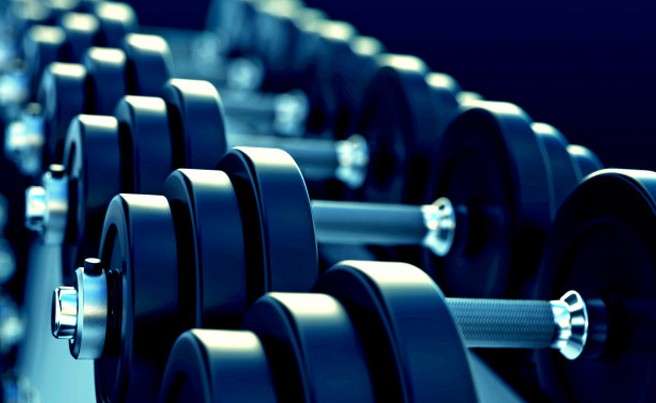
In general, you want to aim for the heaviest weights you can lift for 3-5 sets of an appropriate number of reps. Usually, you’ll be aiming for a lower number of reps at a higher weight, as opposed to lower weight and higher reps.
You’ll also want to focus on slower reps rather than fast reps. You see guys at the gym pumping iron, a curl with every breath, and feel like you need to keep up with that speed. The reality is, that’s only generally activating the short-twitch muscle fibers they’re working. There are plenty of other muscle fibers that take longer to activate, that aren’t necessarily being pushed to their limit when you’re rushing through an exercise. Make each rep take 10 seconds or so, and do as many sets as you can handle.
7. Don’t Ignore Recovery
Like we said; muscle doesn’t grow in exercise, it grows in recovery. Exercise is the instruction you give your body, but recovery is how those instructions are carried out. On your rest days, at most you should be doing some light cardio to keep up your cardiovascular health and your fat burning.

Recovery is about more than just not exercising.
- Recovery means hydration.
- Recovery means sleep.
- Recovery means proper nutrition.
If you’re not taking care of your body, it won’t take care of you.
It can take 2-3 days for the body to recover from high-intensity exercise. This is why you take rest days and cycle through exercises so that particular muscle groups get their 2-3 days to recover, but you’re still working out other groups to bring up your overall muscle mass.
Nutrition is a wild beast to confront. You’ve likely built up decades of ingrained habits, eating meals you love to eat, snacking as you feel like snacking, and generally maintaining a poor diet overall. It can be very difficult to break these habits and adjust to a healthier diet.
We recommend taking it one day at a time. Take minor steps, make minor changes. Cut out that extra snack. Replace less healthy snacks with healthier foods. Gradually shift your diet away from processed carbs and towards healthier proteins. You don’t need to dive in head-first, and in fact, doing so often leads to failure.
Remember, this isn’t a diet plan. To build muscle, you need to consume more calories than your maintenance level each day. You need those calories to be available in protein, along with vitamins, minerals, amino acids, and other nutrients your body uses in recovery. It’s easy to conflate nutrition with diet, and diet with weight loss, and end up eating the wrong things for building mass.
Sample Workout Plans
As we mentioned, there are as many different workout plans as there are individuals that are putting them together. You can piece together whatever kind of plan you want. Here are a few we’ve found and like.
Option 1 is a plan based around a cycle of three different levels of intensity, working on full-body workouts three times per week.
- Monday: Aim for 4 sets per body part (chest, back, legs, shoulders, arms) and aim for high intensity, low reps. Around 5-8 reps per set at the highest weight that you can lift and still complete the reps.
- Tuesday: Rest and recovery.
- Wednesday: Another 4 sets per body part, with low weight but higher reps. Aim for 12-15 reps per set in this range.
- Thursday: Rest and recovery.
- Friday: Another 4 sets for each body part, but this time splitting the difference with 8-12 reps per set at a middling weight.
- Weekends: Rest and recovery.
Option 2 splits up different parts of the body and focuses on them on different days. You work out a little less each day, but work out five to seven days a week instead. It doesn’t matter which days you do which, so long as you allow 2-3 days in between. So for example, you might split up a rotation like this:
- Monday: Legs and shoulder exercises.
- Tuesday: Arm and back exercises.
- Wednesday: Chest and cardio.
- Thursday: Legs and shoulders.
- Friday: Back and chest.
- Weekend: Legs and cardio.
You can find a million different workout options online, and people who swear by them as a great option. Here’s the secret: they all work. It doesn’t necessarily matter what you’re doing, so long as you’re working out each muscle group with heavy weights, low reps, and enough recovery to let muscles grow. Beyond that, pick something that entertains you, doesn’t injure you, and works within your schedule.
Thank! Your message has been sent successfully.







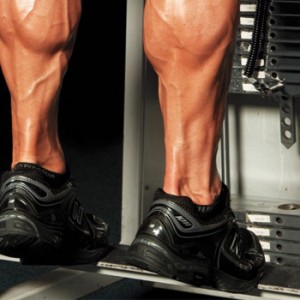



Questions and answers 0